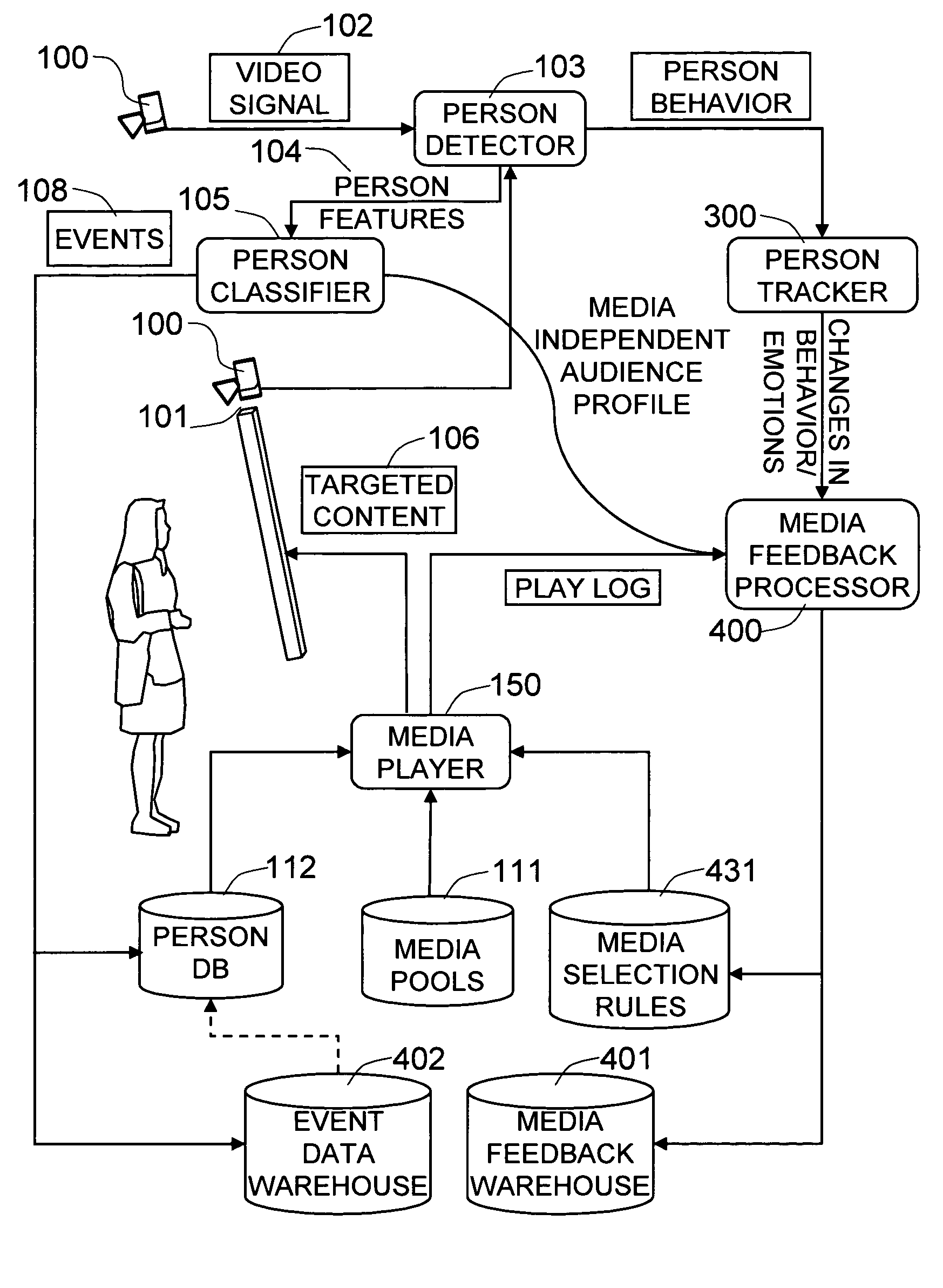Method and system for dynamically targeting content based on automatic demographics and behavior analysis
a dynamic targeting and behavior analysis technology, applied in the field of methods and systems for dynamic targeting content based on automatic demographics and behavior analysis, can solve the problems of difficult to measure the effectiveness of advertisements using a broadcast model, tend to be costly to implement, and contemporary systems still suffer from the limitations of the broadcast model of advertising
- Summary
- Abstract
- Description
- Claims
- Application Information
AI Technical Summary
Problems solved by technology
Method used
Image
Examples
Embodiment Construction
[0085]FIG. 1 shows a block diagram of the components in an exemplary embodiment of the present invention.
[0086]The present invention is directed to the playing of media (images, video, etc.) that is appropriate for the people who are either looking at digital signage 101 or in the view of the camera system or sensor 100. This is termed “narrowcasting.” To achieve this objective, the invention processes images to detect people and extract salient demographic and behavioral features of the people in the scene, then applies the supplied business rules 110, i.e., exemplary media selection rules, and media pools 111, and displays media that is appropriate for the people in the scene. The business rules 110 and media pools 111 are specific to the particular embodiment of the invention. In this exemplary embodiment, this invention may not determine what the appropriate media selection rules and media pools should be, but instead only facilitates the use of media selection rules and media p...
PUM
 Login to View More
Login to View More Abstract
Description
Claims
Application Information
 Login to View More
Login to View More - R&D
- Intellectual Property
- Life Sciences
- Materials
- Tech Scout
- Unparalleled Data Quality
- Higher Quality Content
- 60% Fewer Hallucinations
Browse by: Latest US Patents, China's latest patents, Technical Efficacy Thesaurus, Application Domain, Technology Topic, Popular Technical Reports.
© 2025 PatSnap. All rights reserved.Legal|Privacy policy|Modern Slavery Act Transparency Statement|Sitemap|About US| Contact US: help@patsnap.com



